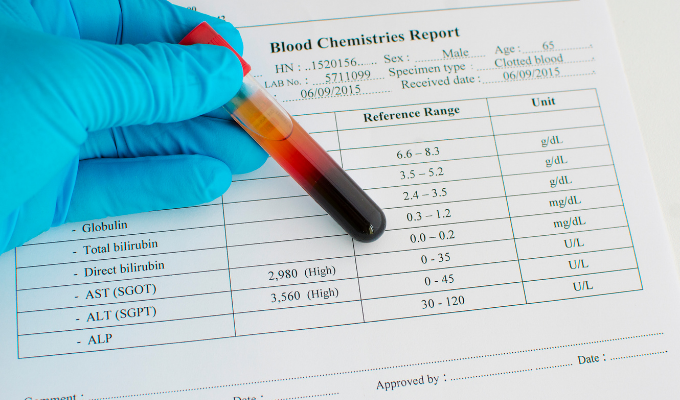What Does My White Blood Cell Count Tell My Healthcare Team?

More Programs and Publications Featuring Dr. Kyle Riding
In this program:
White blood cells (WBC) is one part of blood test measurements. Watch as medical laboratory scientist Dr. Kyle Riding explains how white blood cells, absolute neutrophil count, and absolute granular site count tests are used by healthcare providers to help assess patient health.
Transcript
Leo Hesse:
Now, we have some fancy acronyms like WBC, which stands for white blood cells, absolute neutrophil count, ANC, and absolute granular site count, AGC. Can you please tell us what these measurements tell our healthcare teams?
Dr. Kyle Riding:
Absolutely, and first, I need to say one thing that we really don't do the best job of is expand on acronyms and medicine sometimes, so for all of you watching this, I apologize at the alphabet soup that you all have to deal with when you look at your laboratory results, or you look at your health care record, I'm sure that adds a level intimidation that you certainly should not have to deal with, but let's decode some of these acronyms that are of importance right now. First one is the white blood cell count, which is often abbreviated the WBC, and the white blood cell count is simply just a measure of the number of white blood cells found in a very tiny, tiny pin drop of blood, that which we call a microliters of blood and white blood cells, their main role in the body is to fight off various infections, and every type of white blood cell has its own type of foreign invader that it likes to attack, some like to attack bacteria, some like to attack viruses, and others like to attack parasitic infections.
And so by seeing not just the total white blood cell count and if it's increased or decreased, but also looking at the distribution of those different types of white blood cells, your physician and the rest of your care team can get a really good sense of what is causing this potential infectious or inflammatory response that you're dealing with. Now, one of those specific types of white blood cells are called neutrophils, and if we were to sit back and actually count the number of neutrophils in that little tiny drop of blood, we would end up with the absolute neutrophil count. And this ANC is critically important to those patients who are at high risk for having infections, particularly our patients who are having chemotherapy or on other types of medications that may suppress their immune system, neutrophils are the first responders to an infection, and they particularly love to go after bacterial infections and clean them up for us, and if you think for a second, just think of our skin, I know this isn't fun to think about, but you have tons of bacteria all over your skin as part of what we call your normal flora.
They're doing good for you. They're keeping you healthy, you have lots of that normal flora in your gastrointestinal tract, but the neutrophils are there to kind of make sure those normal flora, those good bacteria don't cross the line and go into places within the body, they shouldn’t, because even though they're good on your skin or along your gastrointestinal tract, if they get to other parts of your body, it could be a problem, so the absolute neutrophil count is a critical measure that assures that a patient is able to fight back just kind of normal infectious organisms that they may encounter on a day-to-day basis, when we give a patient chemotherapy or we give them other what we call immuno-modulating drugs or drugs that kind of play around and change the immune system’s function, what we can see is sometimes a drop in that absolute neutrophil count, and if it gets to be too low, we get very concerned about that patient developing infections from little bacteria that are supposed to be helping you, and so that's the purpose of the absolute neutrophil count. Sometimes that absolute neutrophil count is referred to as the absolute granulocyte count.
The reason that they're called granulocytes is because when you look at them underneath the microscope, they actually have a pretty granular texture to them, and for many years, that gritty granular texture was a defining feature of the cells. And so the ANC and the AGC are very similar in what they're analyzing and looking at for your healthcare team.
The information on Diverse Health Hub is provided for educational purposes only, and is in no way intended to diagnose, cure, or treat any medical or other condition. Always seek the expert advice of your healthcare team.
Related Videos:































